Outstanding in every way.
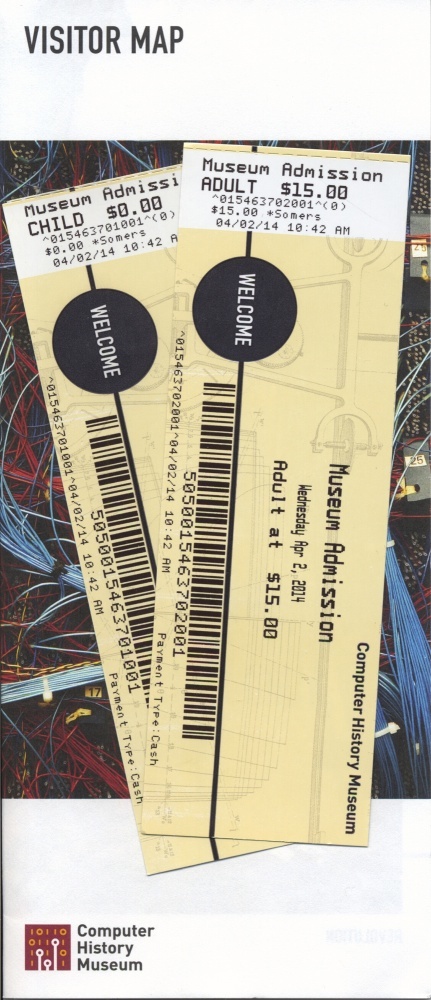
The Computer History Museum is a stone’s throw from the Googleplex, the center of the world as we know it. The Museum is open Wednesday through Sunday. Kids 12 or under enter free, so my son Winston just scraped in.
We had an absolute blast. The quality of everything here – the building, the displays, the docents, the art work – is top notch and could not be improved on.
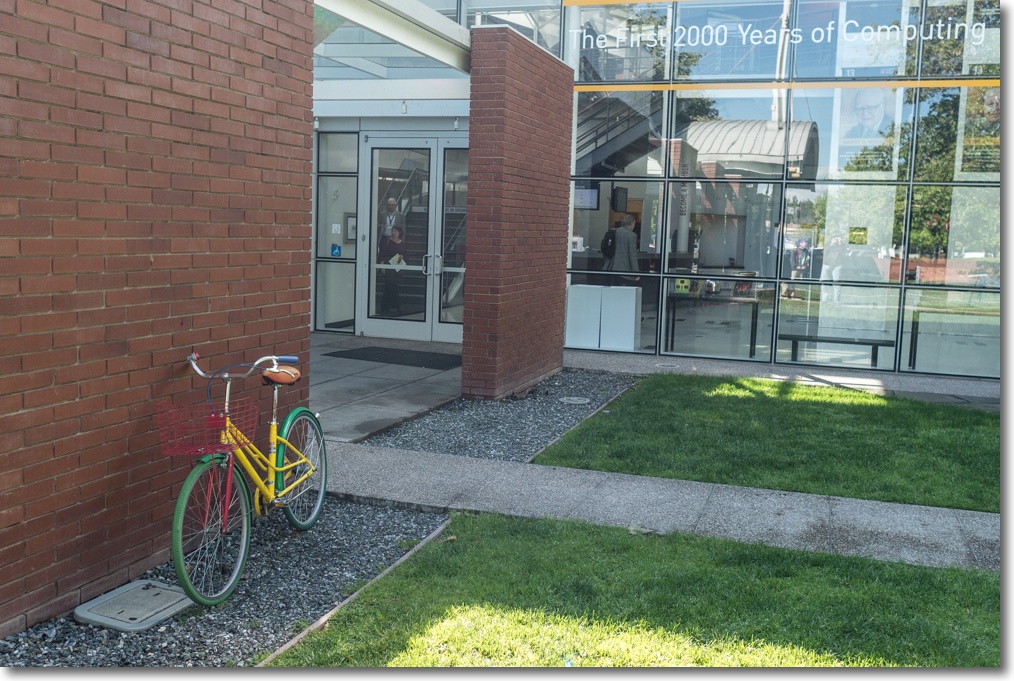
Obligatory Google bicycle at the front entrance.
As an engineer of the mechanical persuasion, my eye is naturally drawn to objects of mechanical beauty and none could be more alluring than Babbage’s Difference Engine, built by London’s Science Museum (a favorite childhood haunt) over 150 years after Charles Babbage made the technical drawings. That one is in the Science Museum and the one here is the second they built, commissioned by Nathan Myhrvold of Microsoft fame. Words cannot do this magnificent machine justice, the very peak of British mechanical engineering design and execution. You simply have to see it for yourself.
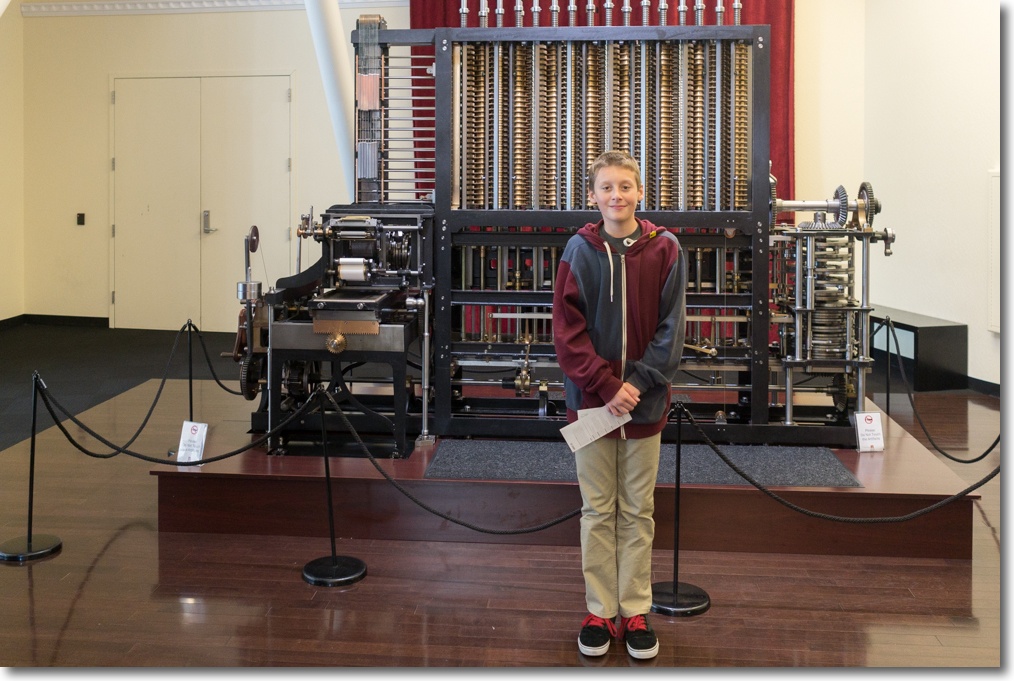
10,000 lbs, 8,000 parts and 11 feet long. Winston provides some scale at 5′ 4″ and 100 lbs.
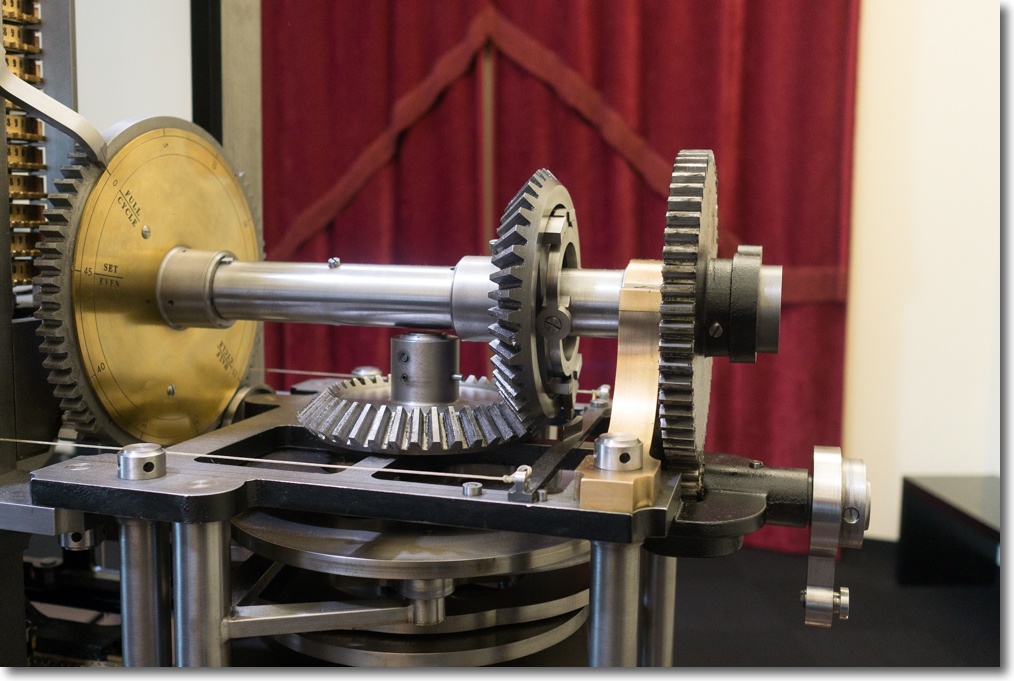
Exquisitely machined right-angle gears.
There’s a daily live demonstration and for those who do not time it right there’s a fascinating video. And yes, when no one is looking, you can touch it and it is a sensuous delight.
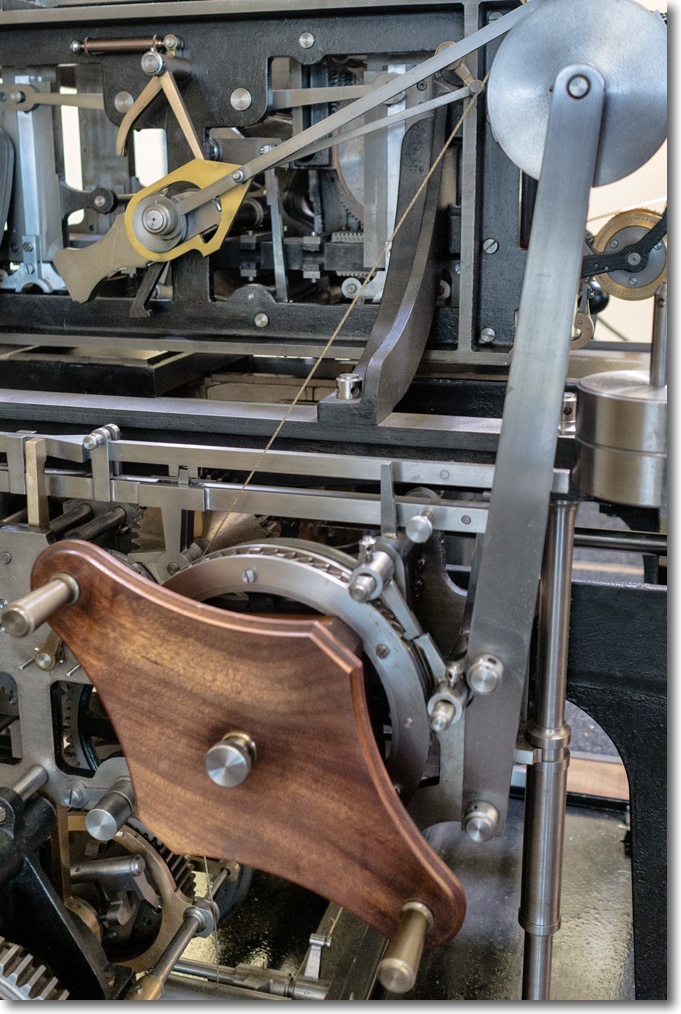
Brass, steel and wood in Babbage’s machine.
More brass and steel in this lovely Morse Ericsson pen register of 1890:
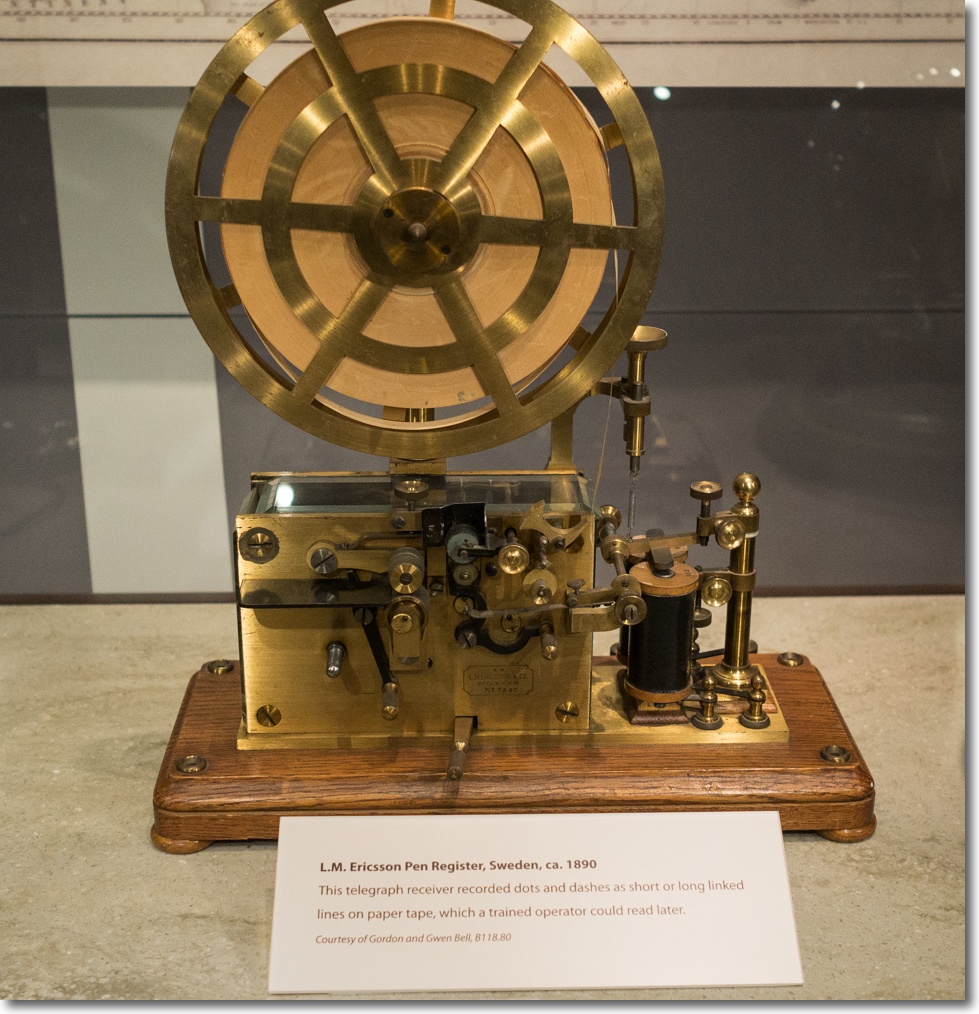
From the golden age of mechanical engineering, with
an absolute minimum of magic (aka ‘electricity’).
And there’s little wrong with this Western Union ticker tape machine from 1895:
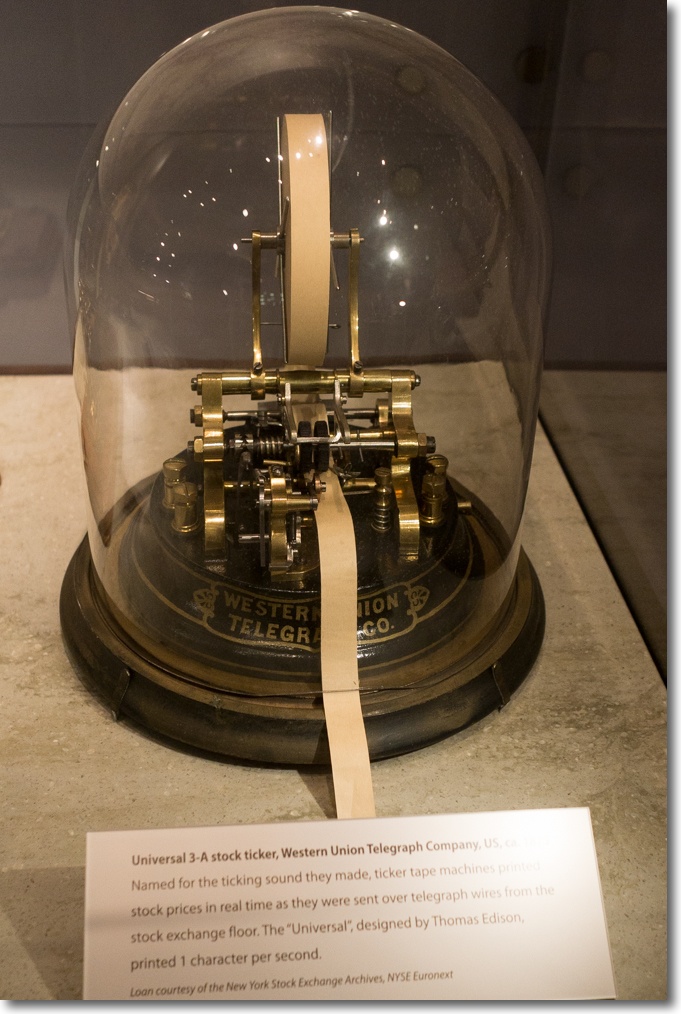
A favorite of the Boy Plunger, early speculator Jesse Livermore (1877-1940),
whose last bet failed and ended in suicide …. The market is a cruel mistress.
Punched cards hold a warm place in my heart for, when a mechanical engineering student at University College, London (1970-1973) I would walk my deck (in a plastic bag as often as not, given the usually foul weather) down the road from Torrington Place to the computer room housing the gigantic IBM 360 computer, returning the next day for the results!
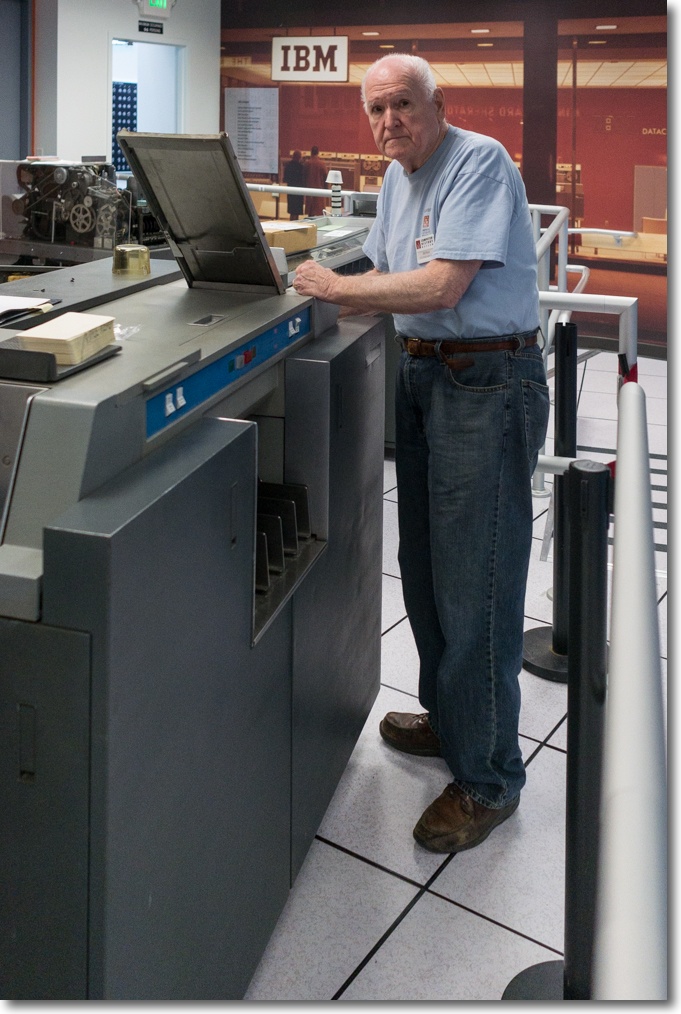
Bill operates the IBM 1401 punched card machine. A 1961 model, the 1401
held over 80% of the computer market.
The clatter of the Hollerith card reader (after the, ahem, American inventor Herman Hollerith – 1860-1929) and the smell of machine oil in the large room housing the hardware was nothing less than Proust’s Madeleine dipped in tea for this visitor. Instant flashback to London, 1970. Well before Thomas Watson and IBM hit the scene, Hollerith’s punched card machines were used to tabulate the 1890 US census, in record time needless to add.
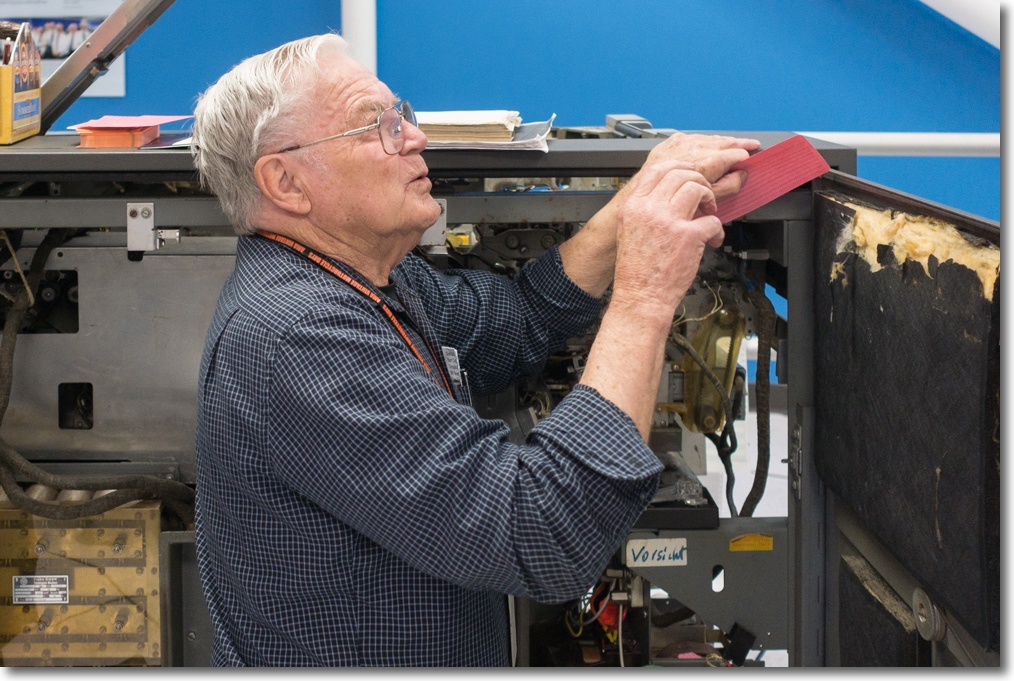
Fixing one of the card readers in the Big Blue room. ‘Vorsicht’ means ‘Caution’ in German.
You really want to know what you are doing here.
It’s hard to appreciate how dominant punched card input was before tape and disk superseded it. The Museum rightly devotes a whole room to the technology.
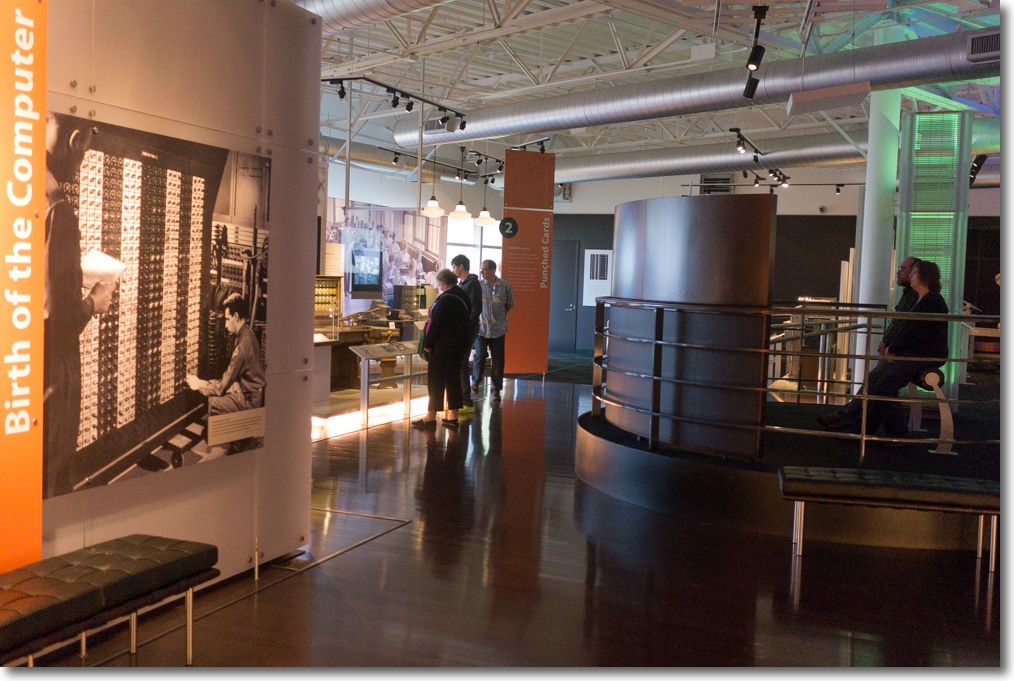
The punched card room.
Tomorrow I’ll take a look at some of the newer displays.
All snaps on the Panny GX7 with the 17mm Zuiko.
Very nice post, Thomas. We’ll be sure to visit the museum next time we are there in the area. Thanks.